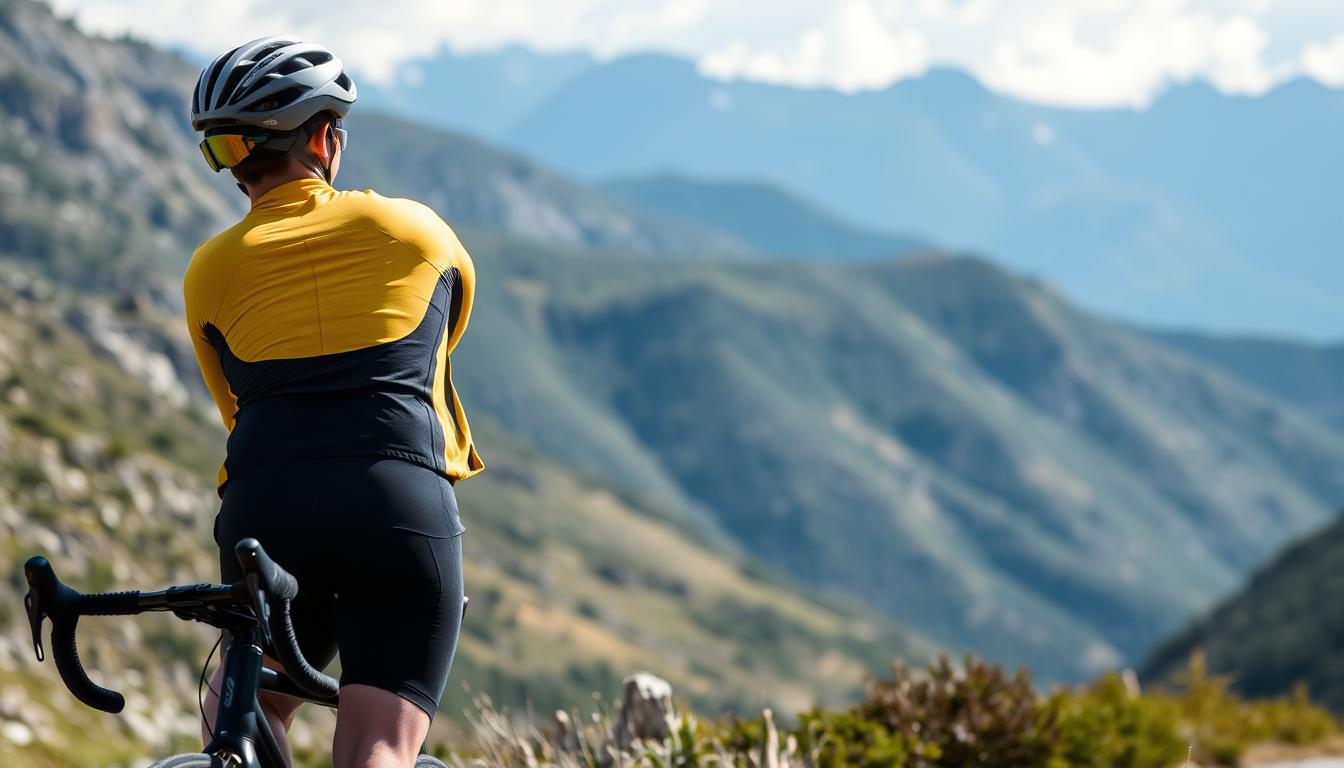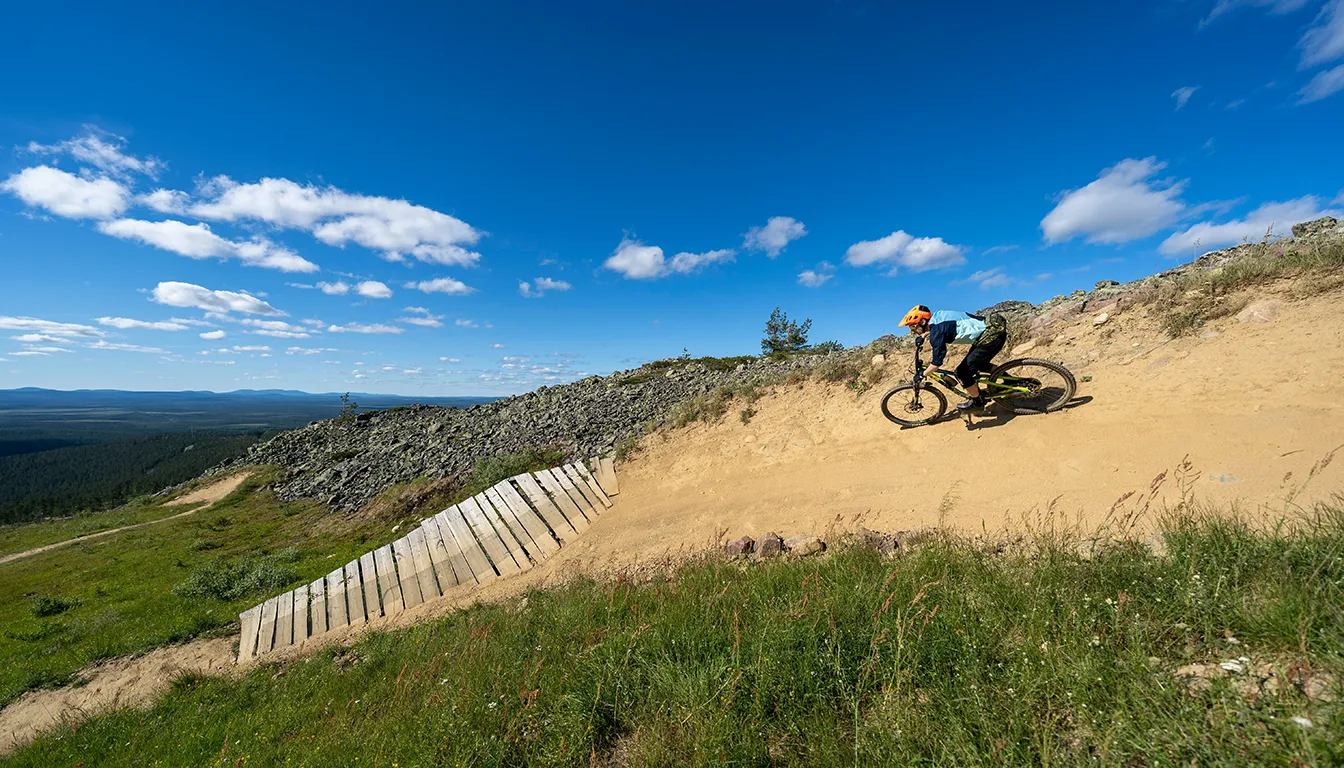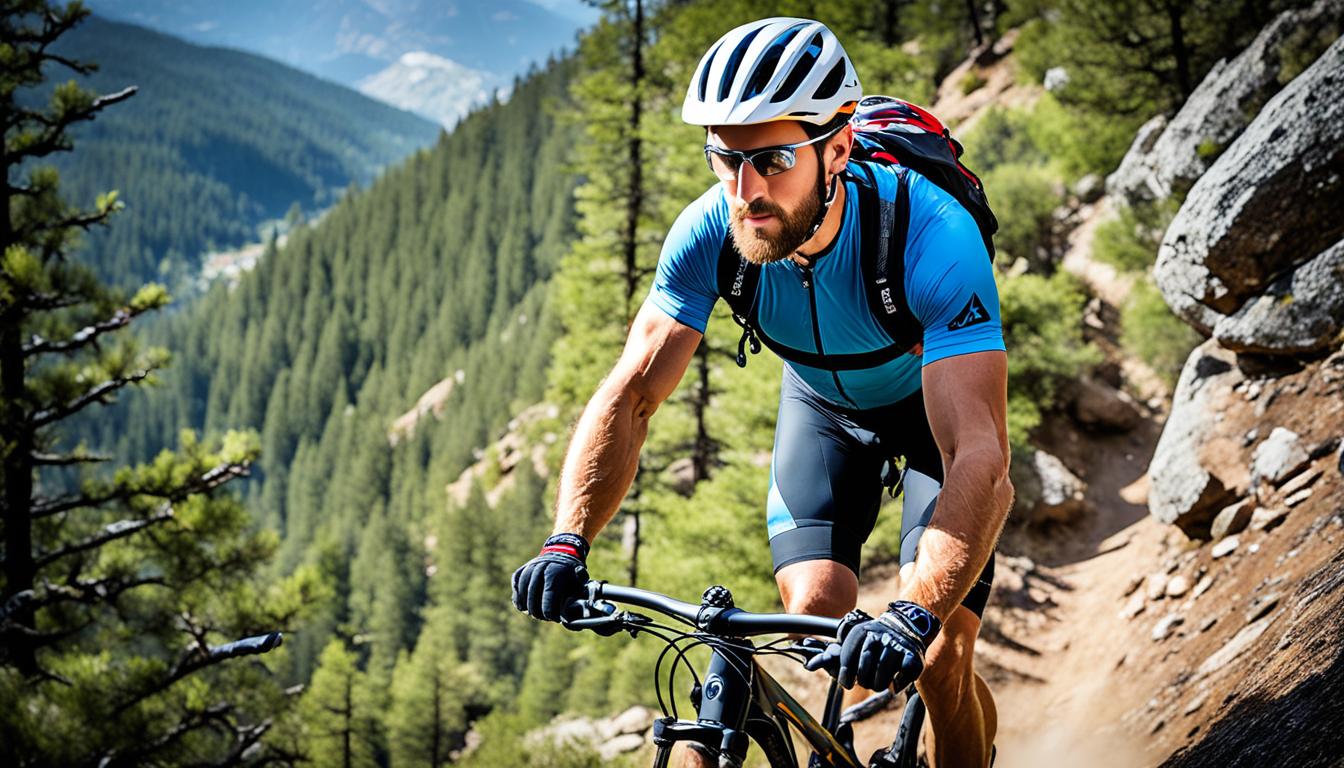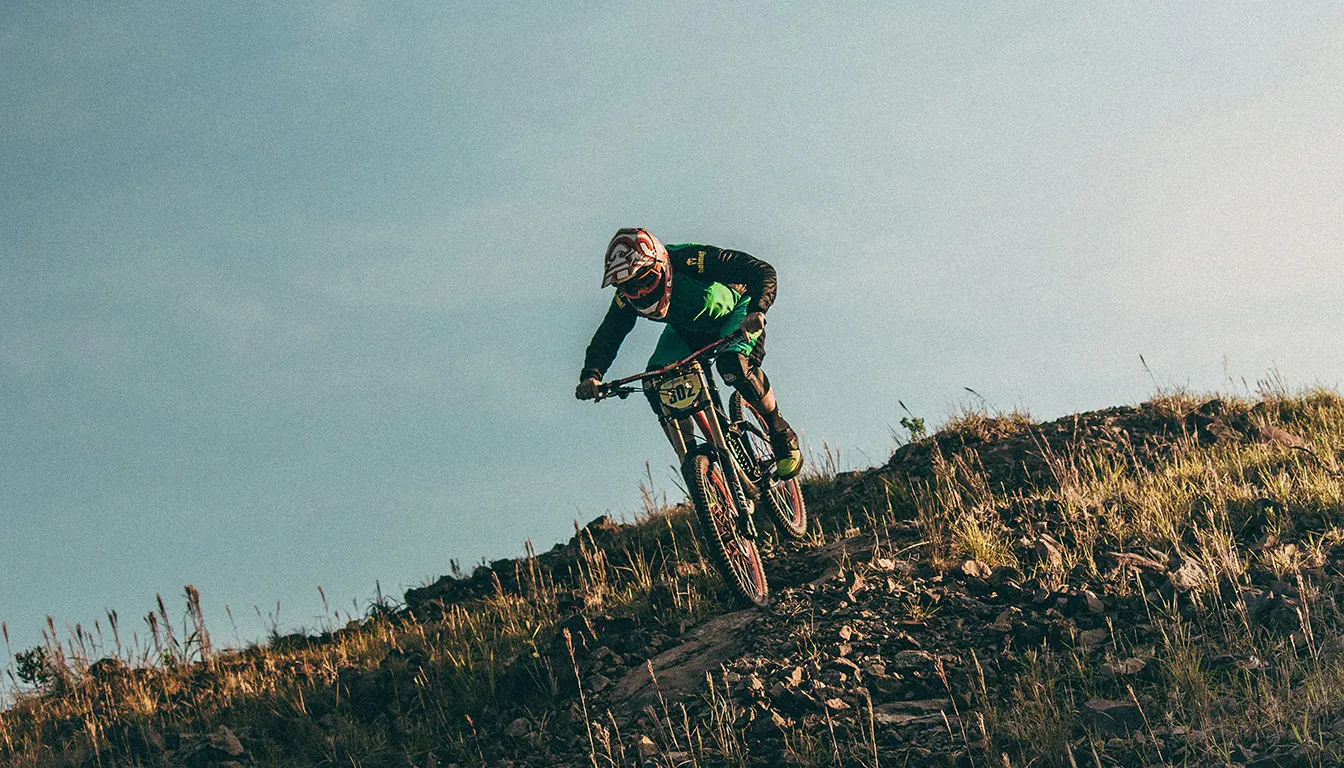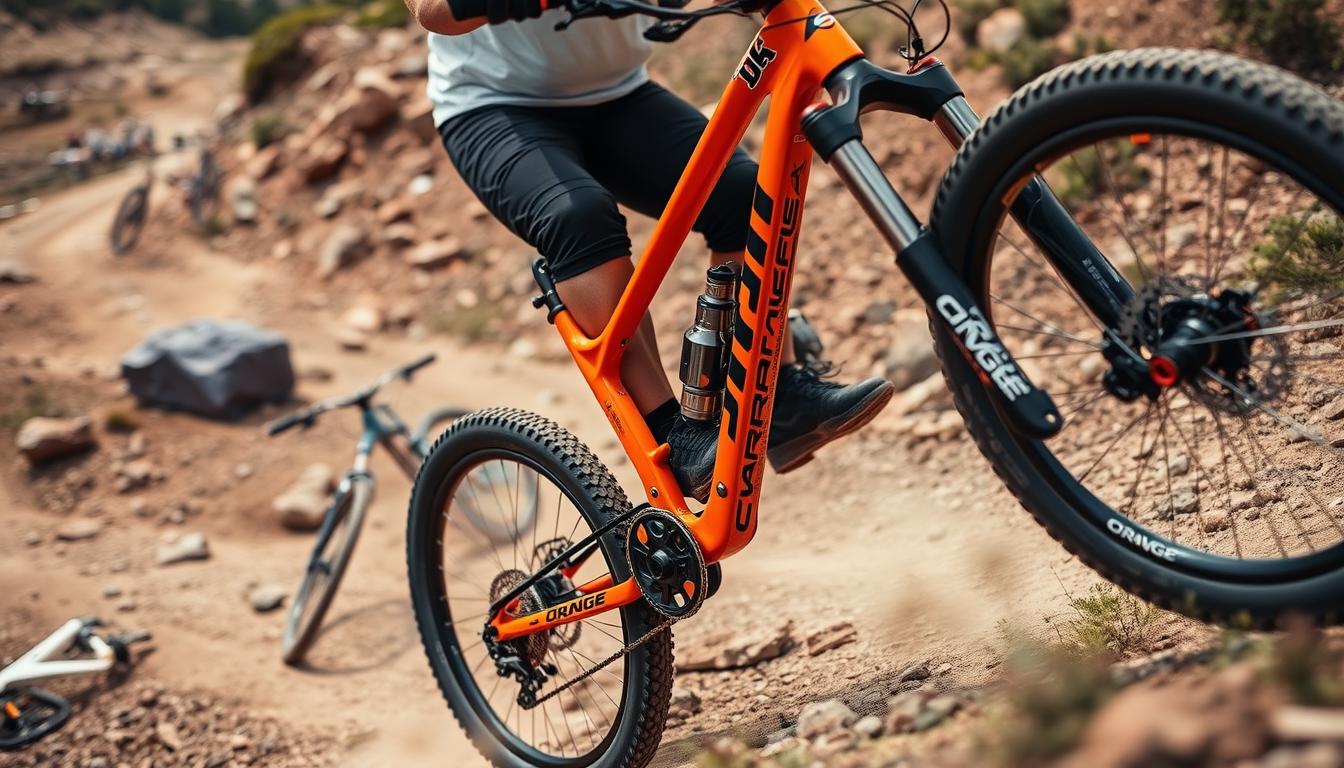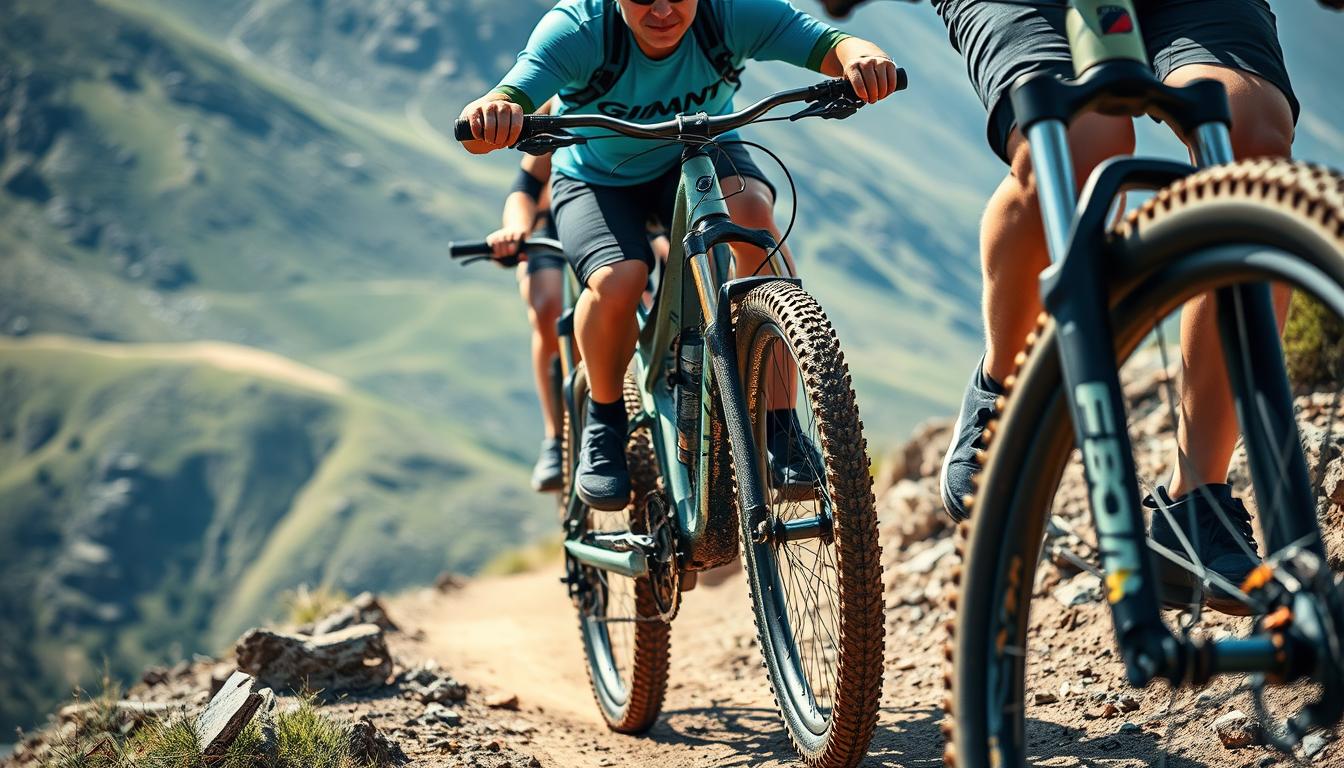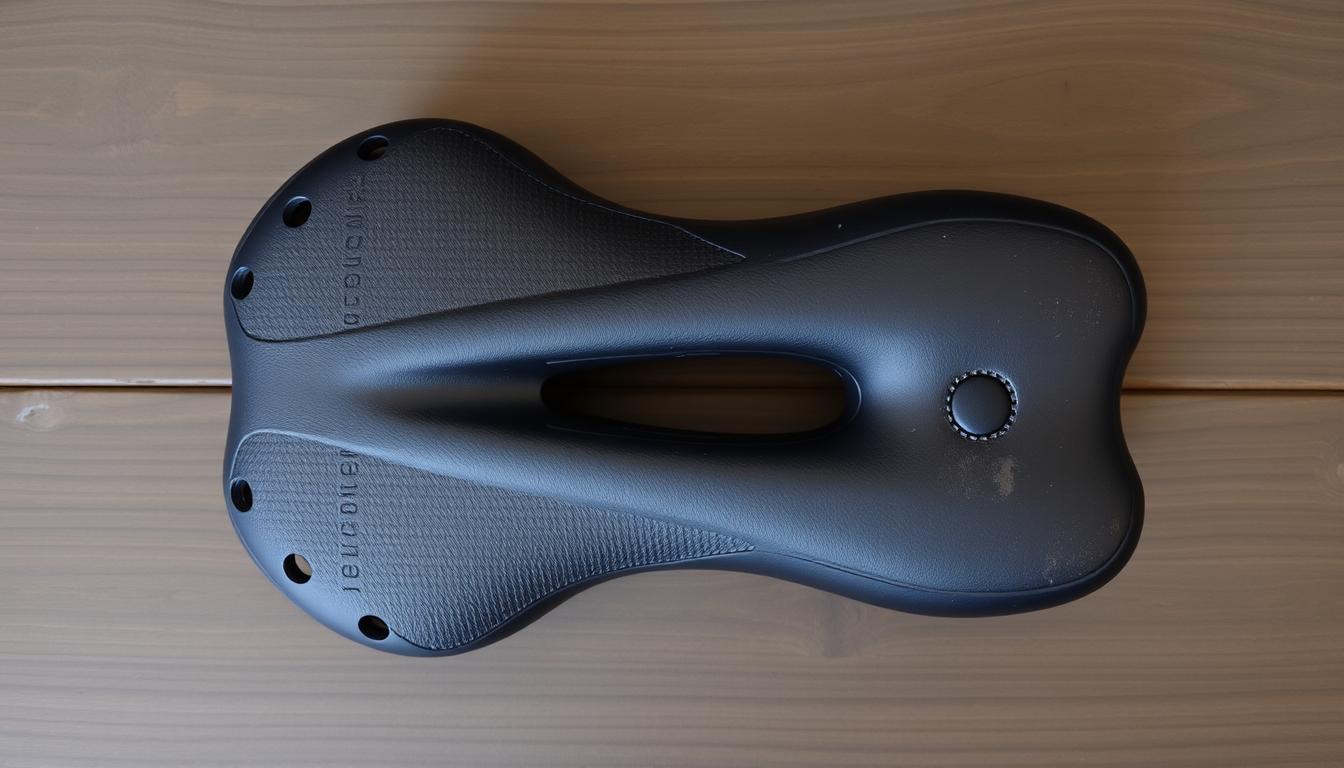Choosing the right clothes for mountain biking is key to having a great time. There are many options available, but it’s important to find a balance. Consider your comfort, style, and the terrain you’ll be riding on. The weather and trail type also play a big role in what you should wear.
This article is a detailed guide to help you pick the right mountain bike clothes. It covers everything from essential shorts for comfort on long rides to protective layers for all weather. You’ll get useful tips to make your mountain biking better.
Understanding the Importance of Proper Mountain Biking Attire
Choosing the right clothes for mountain biking boosts your ride. It offers comfort, protection, and better performance. Wearing the right gear can make a big difference, especially on tough trails.
Benefits of Choosing the Right Clothing
The right mountain biking clothes improve comfort and fun. Breathable fabrics keep your body temperature just right and protect you from the weather. For example, padded shorts offer comfort on bumpy rides, and loose jerseys allow for movement and ventilation. Quality gear not only boosts your performance but also keeps you safe.
Impact of Weather and Conditions on Clothing Choices
Weather considerations for biking are critical in choosing clothes. You need different gear for summer heat than for winter cold. Also, the place you ride matters. Waterproof pants are a must for rain, and breathable materials are perfect for hot days. Knowing these needs means you’re comfy and safe, letting you enjoy biking to the fullest.
Essential Mountain Bike Clothes for Your Ride
Choosing suitable clothing for mountain biking is key to comfort and performance. The base layers and chamois shorts are vital. They provide unique benefits that improve your ride.
Base Layer and Chamois: The Foundation of Comfort
A good base layer is vital for mountain bikers. It keeps you dry by managing moisture during rides. Chamois shorts add comfort by reducing saddle discomfort. They’re padded and work with products like Chamois Butter to prevent skin problems. This combo is crucial for a great ride.
Choosing the Right Shorts or Pants for Protection
Choosing between shorts or pants is personal and depends on the riding conditions. Protecting biking shorts must be tough yet stretchy. Being waterproof helps, especially in bad weather. Baggy shorts provide airflow, while long pants keep you warm in the cold. Knee-length options allow for knee pads, ensuring protection and flexibility. Always pick attire considering the terrain and weather.
Mountain Bike Jerseys: Styles and Functions
Mountain biking needs attire that mixes comfort, function, and style. Among the vital pieces are mountain bike jerseys. They come in many styles for different preferences. These jerseys boost the ride, offer protection, and allow the skin to breathe.
Benefits of Loose-fitting Jerseys
Loose-fitting bike tops have plenty of benefits. They allow free movement, key for tackling tough terrains. They improve air flow, helping you stay cool on climbs. If you fall, they provide extra protection against scratches.
Material Considerations for Comfort and Breathability
The fabric choice is crucial for comfort and doing well. Popular materials include:
- Polyester: It’s light and wicks moisture away, keeping riders dry on hard rides.
- Nylon: It’s tough and resists water, perfect for tough trails.
- Merino wool: It offers breathability and controls temperature in all weathers.
- Spandex/elastane: This makes jerseys stretchy for comfortable, unrestricted movements.
Now, many shirts for mountain biking have UPF protection to block harmful UV rays. They also have reflective parts for better visibility in dim light. For top choices, check out different mountain bike jerseys that fit your taste and needs.
Protective Gear: Helmets, Pads, and More
Safety is key when mountain biking. Wearing protective gear greatly lowers injury risks. This gear is vital for anyone taking to the trails. Mountain bike helmets are the most important. Along with protective pads and gloves, they keep riders safe, no matter their experience level.
The Importance of a Quality Helmet
Mountain bike helmets shield your head if you fall or crash. A good helmet can stop serious injuries and might even save your life. They come in different types, like half-lid, full-face, and more, to suit how you ride. Features like MIPS add extra safety by protecting your head from certain impacts. It’s crucial to make sure your helmet fits well. This means you’ll wear it every time, keeping you safe on your rides.
Additional Protection: Knee and Elbow Pads
On rough ground or in bike parks, extra safety gear is a must. Knee and elbow pads protect you, from light and flexible to ones with hard shells. These pads stop you from worrying about falls. This is great for riders wanting to get better or simply enjoy biking. Brands such as Giro and Fox provide quality protective gear. They ensure riders can find the protection they need.
Choosing Gloves for Better Grip and Safety
Having a good grip makes controlling your bike easier. That’s why cycling gloves are essential. Gloves with full fingers not only protect your hands but also help you hold on tight. Choose gloves that fit well and have enough padding. This way, your hands won’t get tired on long rides. Brands like G-Form and Bell make gloves that are both comfortable and practical. They highlight why gloves are important for mountain biking.
Choosing the Right Shoes and Socks for Mountain Biking
Choosing good footwear and socks is key for mountain biking. You need shoes that meet the needs of how you ride. There are shoes for a tight fit and ones that go well with flat pedals. The right shoes will improve your control, grip, and how well you ride.
Differences Between Clipless and Flat Pedal Shoes
Clipless shoes are often picked by racers because they are stiff. This stiffness helps you pedal better and feel less tired on long rides. On the other hand, flat pedal shoes are great for beginners and fun rides. People like them for their comfort and ease, especially in cold weather.
Optimal Sock Choices for Comfort and Protection
Right socks matter a lot in mountain biking. They should take moisture away and be long enough to protect you. They keep you safe from things on the trail and pedal accidents. In wet conditions, waterproof ones are good. For hot days, go for ones that are light and let your skin breathe.
Footwear Considerations for Different Riding Conditions
Match your shoes and socks to where you’ll be riding. Think about waterproof covers for rainy days. This way, you’ll be comfy and can handle the trails well. Good breathability and comfort in shoes make a big difference in performance. For tips on picking the best biking gear, check out this guide on mountain biking apparel.
Conclusion
Choosing the right mountain biking clothes is very important. Good quality gear makes riding safer and more fun. It’s worth buying comfortable, strong jerseys and shorts. This improves performance and enjoyment on trails.
Different materials like Merino Wool and Nylon are used for biking clothes. These materials are breathable and durable. Choosing clothes that are both comfortable and practical is key. This makes riding better, even on different types of ground.
The best biking attire boosts not only performance but also confidence and joy. For newcomers and those wanting to improve, learning about the right gear is a game-changer. For more tips, you can visit this resource.
FAQ
What type of clothing should I wear for mountain biking?
Wear clothes that offer both comfort and protection. Choose moisture-wicking layers, padded shorts, durable trousers, and breathable tops. Always use helmets, knee and elbow pads, and the right shoes.
How does the weather affect my mountain biking clothing choices?
Weather greatly influences your clothing choices. In the summer, go for light, airy fabrics. For cold or wet weather, pick insulated and waterproof gear. This keeps you comfy and safe, whatever the weather.
Why is a proper base layer important for mountain biking?
A good base layer, like padded shorts, prevents chafing and offers support. It also controls your body temperature and keeps sweat away. This improves your biking performance.
What are the benefits of wearing loose-fitting jerseys?
Loose jerseys enhance movement and ventilation. They keep you cool on climbs and protect you if you fall. The relaxed fit also lessens injury risk from scratches and falls.
How important is helmet safety in mountain biking?
Helmet safety is crucial. Choose a well-fitting helmet to protect your head. Look for helmets with safety tech like MIPS to guard against certain impacts.
What types of protection should I consider while mountain biking?
Wear knee and elbow pads for rough trails. There are light designs for comfort and heavy-duty ones for protection. Pick what suits your ride and style.
Are clipless shoes better than flat pedal shoes for mountain biking?
It depends on your preference and how you ride. Clipless shoes connect you firmly to the bike, enhancing performance. Flat shoes offer easy control and comfort on diverse terrains.
What types of socks are best for mountain biking?
Choose long, moisture-wicking socks to protect against thorns. For wet conditions, waterproof socks are best. Light socks are great for keeping cool in summer.
